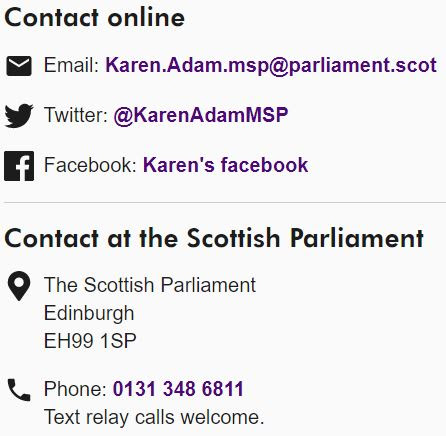Mr Stevenson said:
“It is important that we consider that there is a category of people in our community with a particular language who have been significantly neglected, compared with others.
“People who are visually impaired have huge help, and we can see it. For example, the edges of platforms at railway stations have baubles so that visually impaired people know that they are reaching the edge, and pavements have similar markings. Buses and trains have oral announcements that help the blind. How much are we doing for people who are deaf? So much less.”
“People who are visually impaired have huge help, and we can see it. For example, the edges of platforms at railway stations have baubles so that visually impaired people know that they are reaching the edge, and pavements have similar markings. Buses and trains have oral announcements that help the blind. How much are we doing for people who are deaf? So much less.”
He suggested ideas that could be adopted in the future, adding:
“Ought we to see, as part of our future planning, a standardised sign that says ‘BSL spoken here’ so that people whose first and preferred language is BSL know where to go? It should be a very simple symbol, by the way, so that someone driving a car can see it in a glance. The letters ‘BSL’ might be good enough alone if they are in a standard format.
“BSL reaches beyond local variation and culture, and is as rich as any other language – this is a challenging and important issue.”
“BSL reaches beyond local variation and culture, and is as rich as any other language – this is a challenging and important issue.”


 Born in 1946 and brought up in Cupar, Fife, I was educated at the local school -
Born in 1946 and brought up in Cupar, Fife, I was educated at the local school - 

















